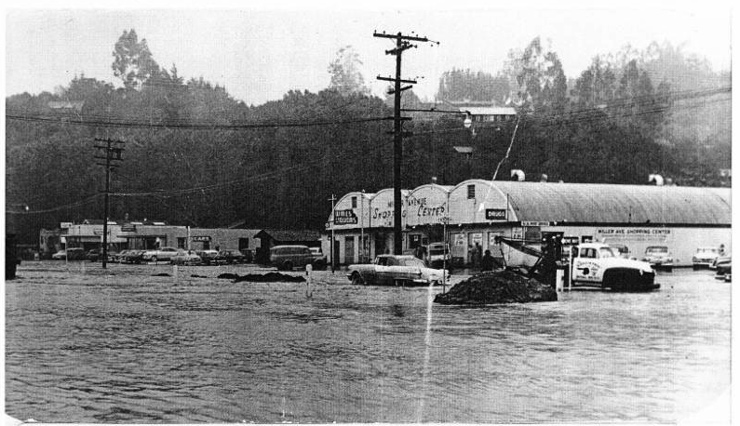
This past winter was a particularly wet one, providing much-needed relief from the previous year’s drought conditions. As if on a giant cosmic see-saw, the extra rain tipped us in the opposite direction, and brought to the fore another issue—namely increased flooding due to sea level rise. A Mill Valley Historical Society lecture, as part of the Mill Valley Library’s First Wednesday Speaker Series, will be of interest to anyone curious about this topic. This is a unique opportunity to step back in time and to understand our neighboring areas from a historical perspective: long-term problems and patterns of flooding, works previously undertaken to abate the problem, and perhaps a view into the future.
WHAT: First Wednesday Speaker Series—Mega Floods & Mega Droughts: A Long-term History of Climate Change in California—Lynn Ingram and Dr. Frances Malamud-Roam
WHERE & WHEN: July 5, Mill Valley Library, 7-9 PM
 Flooding often occurs in Mill Valley when it rains a lot, when the tide is high, and when both occur at the same time. Historically, flooding has at times extended up Miller Ave. to the Locust commercial area and beyond as well as into the residential neighborhoods of Sycamore Park and Tamalpais Park.
Flooding often occurs in Mill Valley when it rains a lot, when the tide is high, and when both occur at the same time. Historically, flooding has at times extended up Miller Ave. to the Locust commercial area and beyond as well as into the residential neighborhoods of Sycamore Park and Tamalpais Park.
Major floods occurred in 1925, 1935, 1945, 1955, 1965, and 2005. The Miller Avenue Streetscape Project should alleviate flooding in the Locust commercial area. A culvert has been installed for drainage directly to Reed Creek. An unusually severe flood occurred on January 4, 1982 when 12 inches of rain fell in 14 hours. At Tam High, floodwater was several feet deep.
During the winter of 2016/2017, king tides (7 ft. or more) caused periodic flooding near Tam High, and more frequently at Manzanita. Flooding frequency is expected to increase with sea level rise. The current rate of sea level rise is roughly double that of the pre-1992 rate. By the year 2100, it is projected that the sea level will have risen between one and four feet. Adaptation will be expensive. Flooding studies are underway by the County and the City.